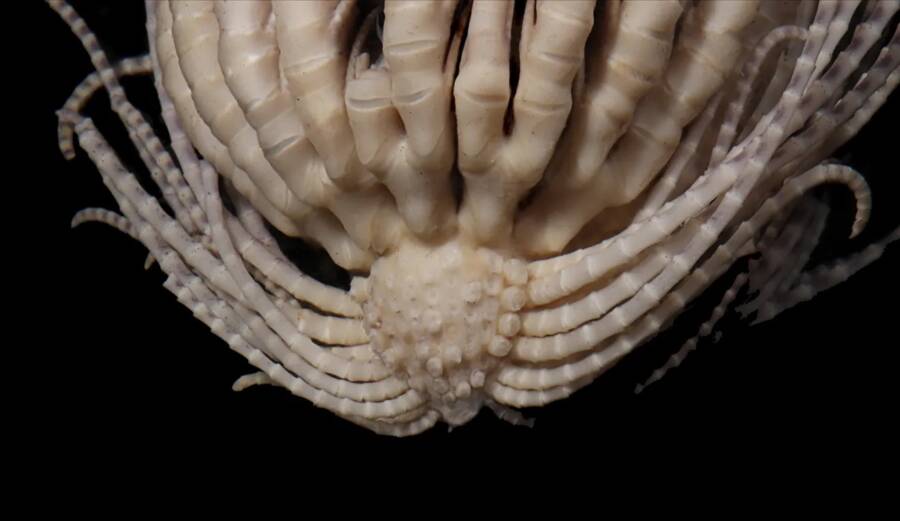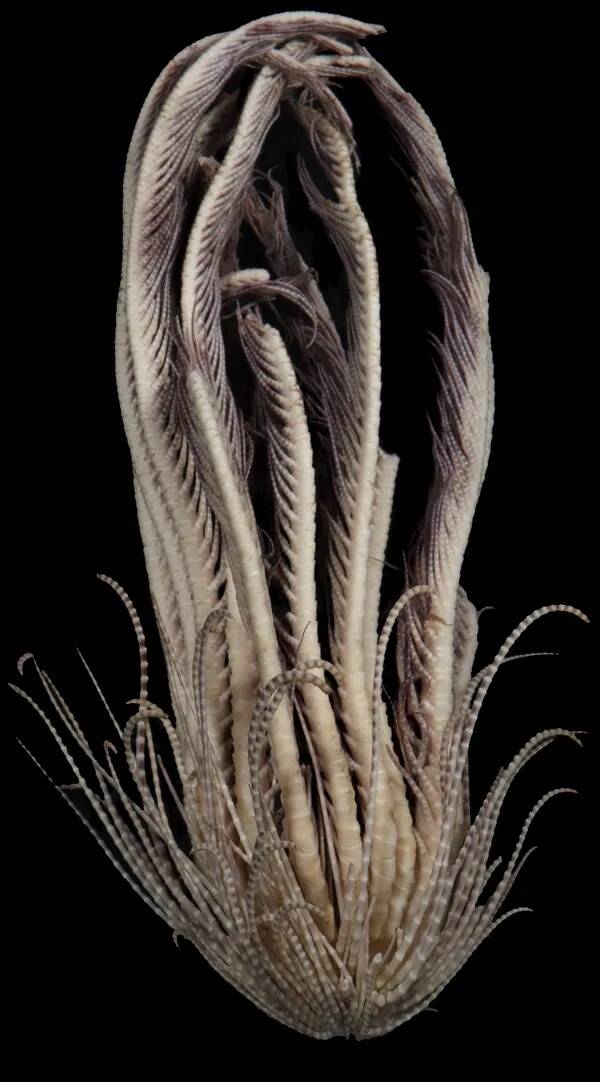The Promachocrinus fragarius, or Antarctic strawberry feather star, sports around 20 feather-like arms for navigation and additional clawed tendrils used for crawling along the ocean floor.

Greg Rouse/Scripps Institution of OceanographyThe Antarctic strawberry feather star is one of eight new species assigned to the genus.
Marine scientists have recently confirmed the existence of a new species of invertebrate living in the waters of Antarctica — a terrifying strawberry-like sea creature with 20 arms.
Named Promachocrinus fragarius, or “Antarctic strawberry feather star,” this newly discovered sea creature’s name might be something of a shock at first glance. Surely, it doesn’t look much like a strawberry at all. But upon further inspection, the little nub at the base of its 20-something arms does indeed resemble the titular fruit.
Greg Rouse, a marine biology professor at the University of California, San Diego, co-authored the study chronicling the discovery of the Antarctic strawberry feather star. Speaking with Insider, Rouse explained that in photographs, the team removed some of the creature’s cirri — the smaller tentacle-like strings protruding from its base — to show off its strawberry-like shape.

“We’ve taken away a bunch of the cirri so you can see the parts that they’re attached to, and that’s what looks like a strawberry,” he said. Rouse added that the cirri have small claws at the end, which allow them to hold on to the bottom of the seafloor.
Fragarius is from the Latin “fragum,” meaning strawberry.
The creature’s arms, meanwhile, are much longer and feathery. As the appendages are a bit more spread out, the creature is able to move elegantly through the ocean waters.
The team from the Scripps Institution of Oceanography published their findings in the journal Invertebrate Systematics in July 2023.
Technically, the Antarctic feather star falls under the Crinoidea class, placing it in the same category as starfish, sea urchins, sand dollars, and sea cucumbers.

Greg Rouse/Scripps Institution of OceanographyPromachocrinus fragarius was found between 215 feet below the surface to 3,840 feet below.
While sweeping the ocean floor in search of more observable specimen, the team actually found four distinct types of Antarctic feather stars. When researching them back at the lab, they realized that there had been an additional four species of Antarctic feather stars previously collected that had never been named.
Until now, only Promachocrinus kerguelensis had been assigned to this genus.
These discoveries bring the total number of species in the Antarctic feather star group to eight: four new animals, and four previously-discovered animals that were never assigned to the genus.
“So we went from one species with 20 arms to now eight species — six with 20 arms and two with 10 arms under the name Promachocrinus,” Rouse said.
The varieties of Antarctic feather stars have several defining characteristics, with natural body colors ranging from “purplish” to “dark reddish,” according to the study.

Feather stars are usually found with their cirri pointed downward, latching onto the ocean floor with their arms up above them and outstretched, propelling them through the water, described in the paper as an “otherworldly appearance of the swimming motions of feather stars.”
The discovery and classification of the Antarctic feather stars put one more oceanic mystery to bed — but that’s hardly saying much. As Rouse said, his lab at the Scripps Institution of Oceanography alone names up to 10 to 15 new ocean species per year — and even more new discoveries frequently occur across the globe.
It seems scientists still have plenty to learn about the oceans’ many mysteries.